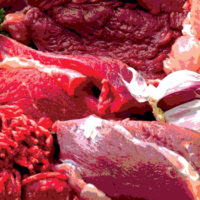The potential public health risk of the non-O157 Shiga toxigenic Escherichia coli (STEC) continues to top the list of concerns for many food safety professionals. The U.S. Department of Agriculture (USDA) Food Safety Inspection Service (FSIS) introduced its first internal method for detection and isolation of the top six non-O157 STEC in October 2010. More recently, in a special session at the International Association of Food Protection meeting in Milwaukee earlier this year, U.S. Secretary of Agriculture Tom Vilsack indicated that the USDA is moving forward with plans to develop regulations pertaining to these top STEC in food as early as spring 2012. In the meantime, several leading food companies announced plans to implement testing programs for the top six non-O157 STEC in addition to their existing E. coli O157:H7 testing efforts. However, accurate detection of this group of organisms represents a new and unique challenge to the food industry.
The Rapid Method Dilemma
The top six non-O157 STEC (Top STEC) have been defined by USDA FSIS as E. coli belonging to serogroups O26, O111, O103, O121, O145 or O45 and possessing both the eae gene and either the stx1 or stx2 genes. Because this definition includes both an immunological component of the O-antigen and a genetic component of specific pathogenicity genes, rapid methods employing only a single detection technology will generate a high frequency of false positives. Because many strains of E. coli and other bacteria belonging to these six serogroups do not possess the necessary pathogenicity genes, traditional antibody-based tests such as lateral flows or enzyme-linked immunoabsorbent assays will inaccurately detect many non-Top STEC organisms. Similarly, because there are over 200 other serotypes of E. coli that contain the eae and/or stx genes, genetic-based methods that target only these genes are subject to inaccuracy, resulting in a high rate of false-positive results. These false positives would have to be sorted out either with a series of secondary genetic tests for the O-group genes or through labor-intensive traditional culture methods.
Detection methods that combine both immunological and genetic technologies can greatly increase the specificity and accuracy of Top STEC detection. The Assurance GDS® pathogen detection system from BioControl Systems, Inc. incorporates a proprietary PickPen® immunomagnetic separation (IMS) sample preparation procedure prior to PCR-based detection of the gene targets. The PickPen procedure captures and isolates bacteria belonging to the target serogroups. As such, the downstream reaction for detection of the target pathogenicity genes is performed on a unique subset of organisms that belong only to the serogroups of concern.
A Building-block Approach to STEC Testing
The unparalleled collection of Assurance GDS STEC assays provides food processors with the building blocks necessary to assemble a comprehensive and cost-effective STEC testing program. The new Assurance GDS MPX Top 7 STEC assay provides definitive positive/negative results for both E. coli O157:H7 and Top STEC in just 12 hours. Following enrichment and IMS capture of the top seven serogroups, including O157, the Top STEC results are based on the presence of the eae, stx1 and stx2 genes, while the E. coli O157:H7 result is based on the same proven gene target found in the Assurance GDS E. coli O157:H7 kit, utilized extensively throughout the industry.
For organizations that want to maintain a separate E. coli O157:H7 testing strategy, the Assurance GDS MPX Top 6 STEC assay captures the top six non-O157 serogroups and then provides a definitive result based on the eae, stx1 and stx2 genes. Still more flexibility can be had with the Assurance GDS Top STEC (eae) and Assurance GDS Shiga Toxin Gene assays. Both are available with either Top 6 or Top 7 serogroup IMS capture options, allowing users to implement a sequential approach to testing that provides Shiga toxin gene results for only those samples already determined to be positive for eae. The extensive collection of Assurance GDS STEC assays allows organizations to assemble custom testing strategies to fit their specific food safety program needs for the detection and confirmation of E. coli O157:H7 and the six non-O157 serogroups of STEC.
The Assurance GDS pathogen detection system includes a comprehensive offering of assays for detection of the major foodborne pathogens, including Top STEC, E. coli O157:H7, Shiga toxin genes, Salmonella, Listeria spp., Listeria monocytogenes and Cronobacter spp. The system is internationally recognized and accepted based on its extensive third-party validations and approvals from organizations such as AOAC, AFNOR, NordVal, Health Canada and the Brazilian Ministry of Agriculture. The flexible, easy-to-run assays provide the fast and accurate results food processors and testing labs require to both affordably and economically ensure the safety and integrity of their products.
For more information regarding Assurance GDS, contact BioControl Systems at 800.245.0113 or visit the website at biocontrolsys.com
The Challenges of Shiga Toxigenic E. coli (STEC) Detection

Looking for a reprint of this article?
From high-res PDFs to custom plaques, order your copy today!







